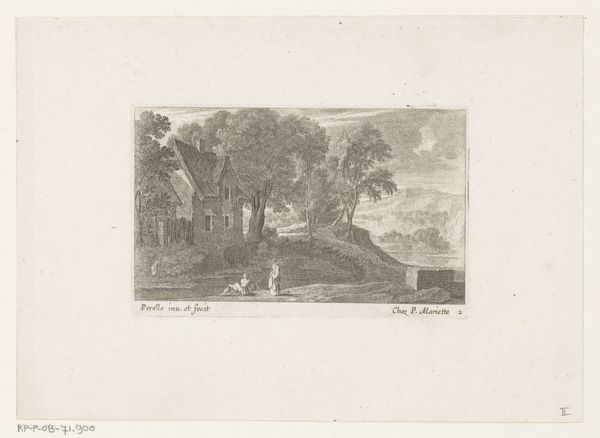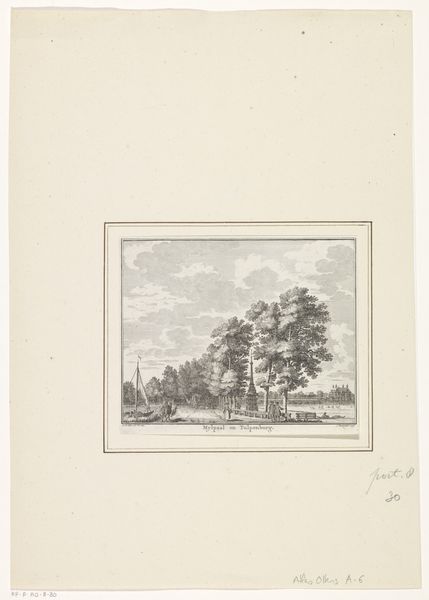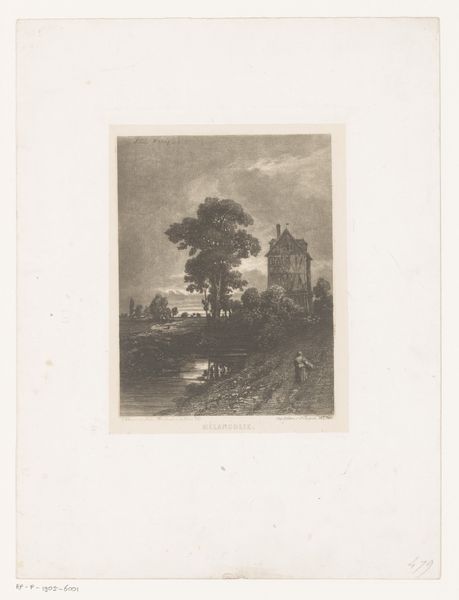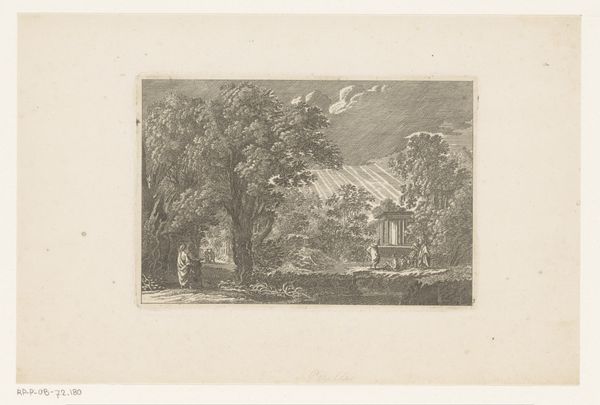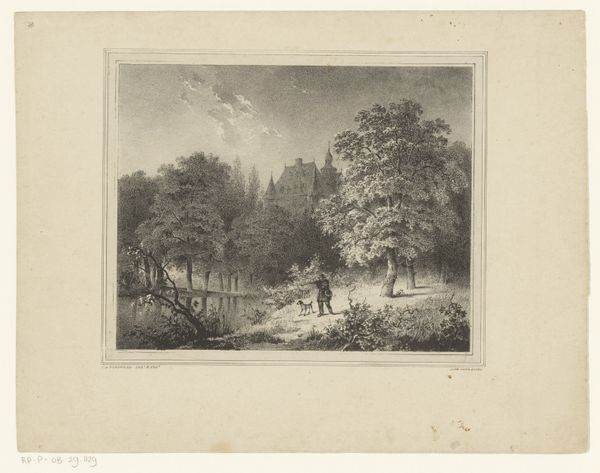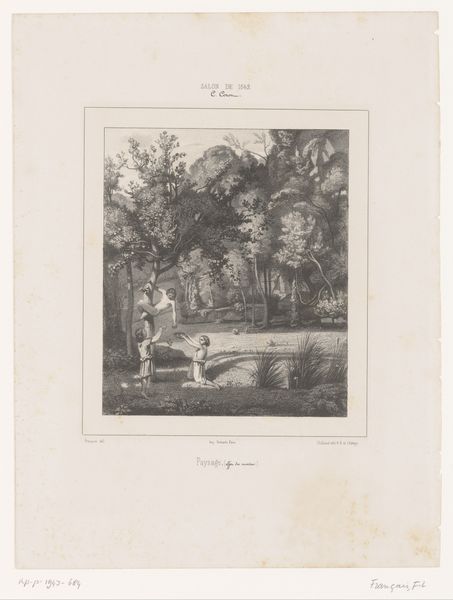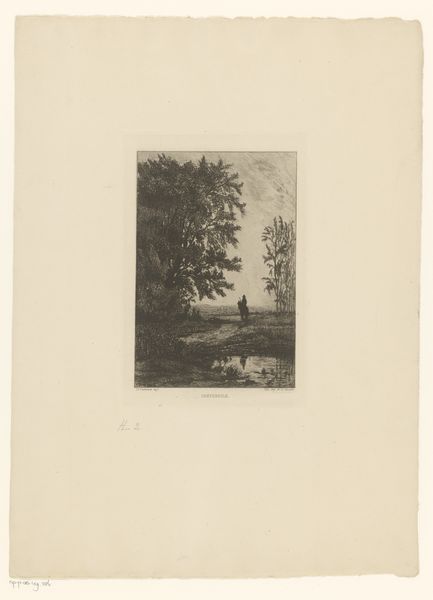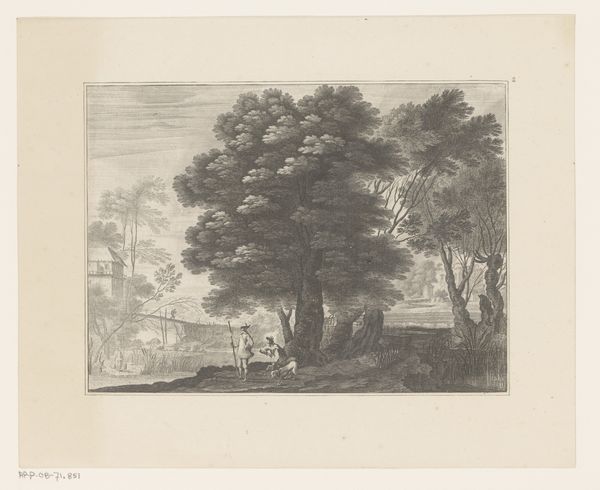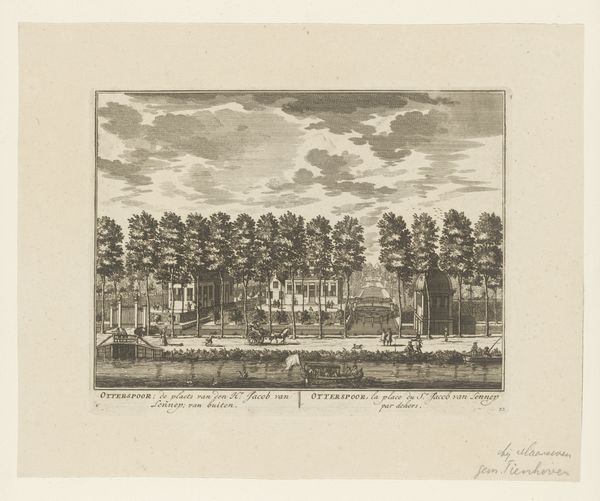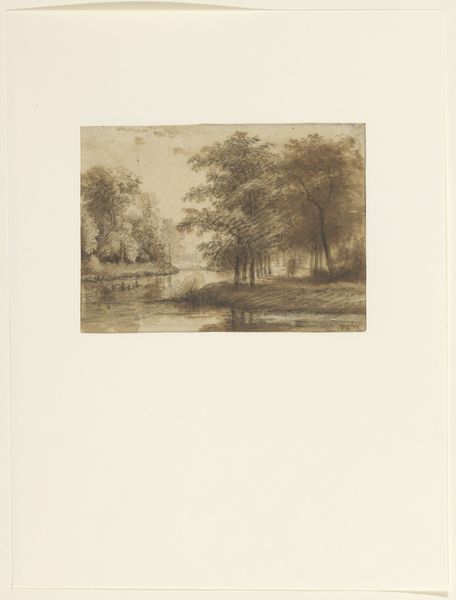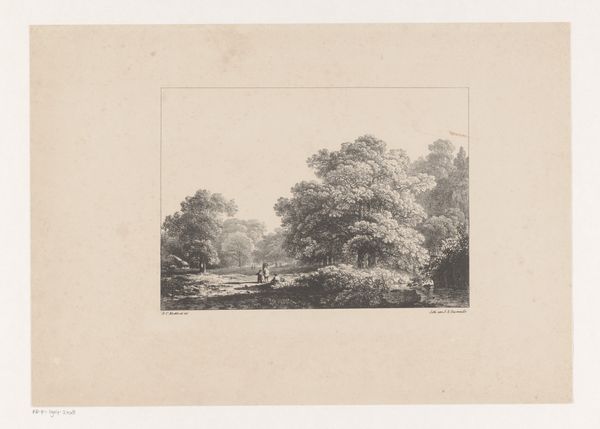
Dimensions: height 388 mm, width 299 mm
Copyright: Rijks Museum: Open Domain
Curator: Let’s discuss "Huizen langs het water," or "Houses along the water," an engraving by Cornelis Springer, created before 1862. It’s currently held in the Rijksmuseum. Editor: My first impression is one of tranquility tinged with melancholy. The muted tones and precise linework evoke a sense of nostalgia. You can almost smell the river! Curator: Indeed. The precision allows Springer to depict the societal structures embedded in this cityscape. Note how the architecture embodies power and class, overlooking the water where the labor of the city likely occurs. Consider how those inhabiting the houses relate to that unseen, yet vital labor. Editor: Absolutely. The detailed rendering of the buildings points to the importance of craft and material reality. Look at how the textures are evoked using only engraving. It reminds us of the artisanal labour inherent in image making before mass production. Curator: And even within those aesthetic choices, consider the privilege embedded in its creation and reception! Who had access to appreciate and own such a detailed depiction of their society? Which stories does it consciously or unconsciously omit? Editor: I am also struck by the relationship between the built environment and the natural world here. The houses don’t overwhelm their setting but feel almost as if grown organically alongside the river. I think the workers enhance this sensibility because of their manual contributions of construction or trade and make it easier to observe. Curator: Precisely. The romantic inclination intertwines with the emerging industrial world, resulting in a fascinating dynamic of social commentary within a seemingly picturesque scene. What realities is Springer deliberately or indeliberately portraying? Editor: Considering its status as a print allows the prospect of multiple impressions available to the masses who, in theory, might appreciate it and see their environment shown for perhaps the first time. Curator: That tension between the ideal and the reality feels particularly potent. Thanks for the additional insight. Editor: And thank you—recognizing the relationship with production is important to not be overlooked.
Comments
No comments
Be the first to comment and join the conversation on the ultimate creative platform.
